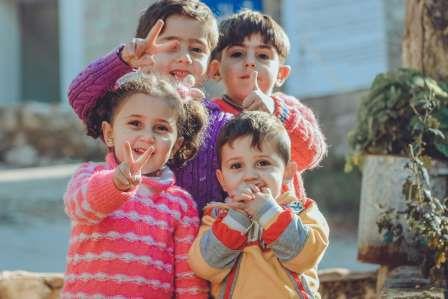Child Safety Guidelines
According to a 2019 report by the National Institute of Mental Health and Neurosciences (NIMHANS), over 500,000 children in India have died due to injuries in the last decade. Children account for about 15% of the total injury-related deaths, and almost 170 children die every day on account of an unintentional injury.
Due to their small physical size and immature physical and mental capacities–particularly those of risk perception and impulse-control–children have been considered vulnerable by all health institutions at the state and national level.
Nahon, Saharovich & Trotz (Memphis, Tennessee), an organisation dedicated to providing attorney services for personal injuries, has issued a collection of resources that will help parents and other caretakers keep children safe.
NST has provided a factsheet and a list of guidelines for injury prevention for the various spaces in which children might find themselves most frequently, either with or without adult accompaniment.
In India, the NIMHANS, along with the Centre for Chronic Conditions and Injuries, are dedicated towards raising awareness about the increasing susceptibility of children to injuries, and particularly fatal injuries.
Accordingly, they also issue guidelines and recommend best-practices to ensure the safety of children in various spaces: schools, motorised vehicles, roads, households, and the internet. Additionally, both NST and the NIMHANS address concerns of mental health, substance abuse, bullying, and peer interaction.
School Safety
All places of work must comply with Occupational Safety and Health Administration (OSHA) standards of safety and first aid. Since schools are trusted as spaces where parents may leave their children for long periods of time without their safety being compromised, it is important for all staff to be equipped to handle children.
Of the 131 schools surveyed by the NIMHANS for the 2019 report, only 11.1% of public schools and 31.4% of private schools had safety guidelines in place.
Globally, teachers and administrators must be trained in school safety, first aid, fire drills, and panic control. In addition, annual workshops on classroom, playground, and laboratory safety must be held for students and teachers alike.
Vehicular Safety
Although many road accidents happen out of the control of the victim, there are certain non-negotiable habits that must be inculcated. NST recommends that children be restrained using seat belts at all times, and taught how to engage and disengage seat belts themselves.
School bus drivers should also be highly qualified and well aware of traffic laws and bus safety regulations, going through rigorous training and testing before being allowed to transport students to and from school.
In India, nearly 41% of all fatal injuries among children happen on roads. Motor safety practices such as wearing helmets and seatbelts are not given much importance in India, and traffic laws are flouted more often than followed. Until stricter legislation takes effect, it will be difficult to curb traffic injuries.
Nevertheless, it is important for parents and teachers to stress the importance of following traffic and pedestrian laws, and for the government to reinforce the police for doing their duty and safeguarding the safety of non-motor vehicles.
Cyclists and walkers need to be given their own lane on roads to prevent accidents. People must also be incentivised to uphold the rules of roundabouts and zebra crossings, to ensure a safer, more efficient transport system.
NST also stresses the importance of helmets and safety gear for cyclists, which are often neglected.
Household Safety
While children are more likely to have accidents outside the home, there are several avenues for injury even within. Household appliances, including toys and flammable fabrics and items in the kitchen pose health risks to unsupervised children.
Apart from following guidelines issued by the U.S. Food and Drug Administration (FDA) and the Consumer Product Safety Commission (CPSC), parents must ensure that they keep potentially hazardous items out of the reach of children.
The manufacture and sale of toys in India is regulated by the Department for Promotion of Industry and Internal Trade, which issued the Toys (Quality Control) Order in 2020 to supervise and regulate toy manufacturers.
Furthermore, children must be practically taught the science behind combustion as part of their school safety drills, and also how to handle tools like fire extinguishers. Practical life skills such as the methods of handling sharp objects, hammers, nails, and other household objects need to be made part of school curricula as well.
Internet Safety
While children are being exposed to the internet at increasingly younger ages, most social networking sites and adult websites do not have adequate safeguards in place to prevent children from either stumbling upon them or actively seeking them out.
Further, there are more avenues than ever before for children to be exposed to the online world: smartphones, tablets, personal computers, gaming consoles, and smart televisions, to name a few.
Many schools today have dedicated courses or workshops on the safest ways to navigate the online world, but they are not exhaustive or thorough. Rather than merely pointing out settings or buttons to toggle on and off while browsing to filter out adult content, it would do more good to educate children on the moral principle behind engaging in certain activities.
Children are naturally inquisitive; this nature should be safely encouraged rather than fearfully extinguished.
Mental Health
According to NST, “common forms of bullying include taunting, name-calling, spreading rumors, making rude gestures, tripping, and hitting someone else, and in 2015, it was reported over 21% of students [in the USA] between the ages of 12-18 experienced bullying at school”.
Unfortunately, mental health, bullying, and substance use remain taboo in Indian societies. Both homes and schools do not adequately discuss the growing use of drugs and instances of depression and other mental health issues in children.
The only way to tackle this is by sensitising parents and teachers to mental health, and making breaks mandatory to relieve burnout.
As difficult as it is to change people’s mindsets in the short run, we would be best served if we started by making classroom sizes smaller and more inclusive of people of all genders and sexual orientations, making periods shorter and exams less important to high-school and university admissions.
Mental health is not unique to adolescents or young adults, but goes all the way back to toddlers. From the time children are able to think, they also develop the ability to emote. The first 20 or so years of a person’s life are volatile, owing to dramatic changes both within and outside the individual.
Accordingly, it is crucial to create safe spaces for children to explore and grow on their own terms, rather than forcing them to adopt a lifestyle that they may find restrictive or scary.
Written by Shrish Vijaya Sudharsan.





No Comment